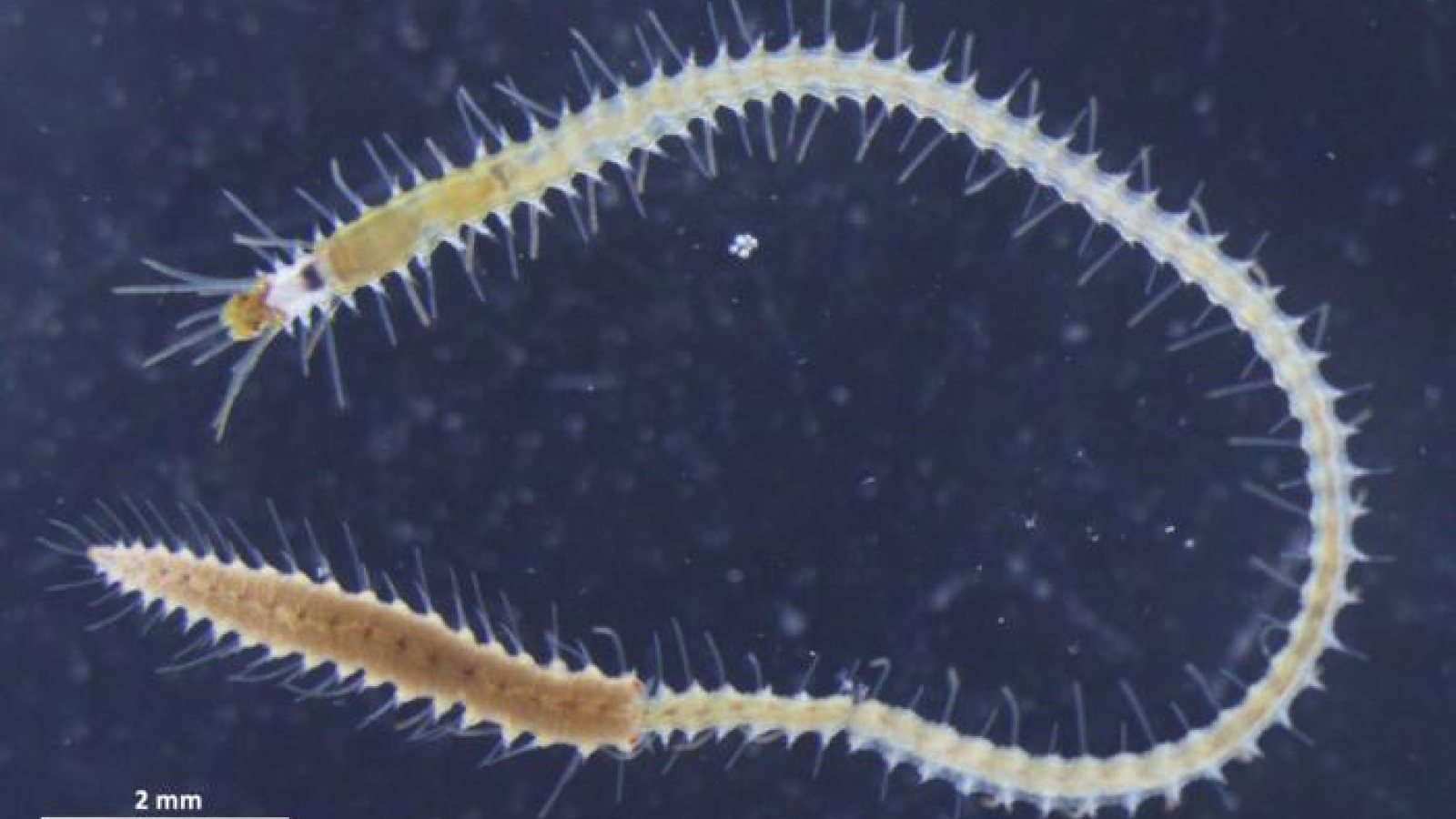Strange sea worms have butts that grow a brain before wriggling off to find a mate
Scientists have discovered how Japanese green syllids — a type of sea worm — grows a twin on its butt that swims away to spawn.

Some marine worms have developed a strange reproduction strategy: They essentially grow a second worm on their rear ends, head and all. This bizarre twin then breaks off and swims away to mate with other swimming butts of the opposite sex.
In a study published Nov. 22 in Scientific Reports, researchers described exactly how Japanese green syllids (Megasyllis nipponica) reproduce in this very weird way.
Most of the 1,000 species of syllid worms live on the bottom of the ocean. When some species are ready to reproduce, they undergo major changes, developing more muscular bodies and structures that enable them to swim in the water column — meaning they can travel longer distances to find mates. Much of their body mass is converted to the production of eggs or sperm. This body form is known as an epitoke. The vast majority of species die after they reproduce.
Others, like Japanese green syllids, grow an epitoke at their tail ends — called a stolon. This structure then breaks off and swims away to locate members of the opposite sex and produce the next generation. Study co-author Toru Miura, a biologist with the Misaki Marine Biological Station at the The University of Tokyo, told Live Science that the process enables these worms to repeatedly reproduce.
Related: Bizarre sea worm with regenerative butts named after Godzilla's monstrous nemesis
The stolon is not just a disembodied tail, though. It develops its own slightly smaller brain, two sets of eyes and four pairs of antennae. The gonads, or sex organs, develop in the stolon first, followed by the brain, eyes, antennae and a series of bristles. The stolon does not, however, have a functional mouth or digestive system. "The only task of the stolon is to spawn sperm or eggs, so they die soon after spawning," Miura said.
The researchers were curious about the expression of Hox genes — which determine the body plan of an organism — in the stolon. They initially assumed that the genes would directly mirror those in the organism itself, with genes for the head, midsection and tail expressed in the same places. "However, the head-determination genes were recruited at the position of the stolon head, indicating that a stolon consists only of a head and a tail without the mid part of the original body," Miura explained.
Sign up for the Live Science daily newsletter now
Get the world’s most fascinating discoveries delivered straight to your inbox.
While the mechanism by which the stolon detaches is not yet fully understood, it likely just breaks off when it starts to wriggle. "Probably, only the outer epidermis [skin] is connected just before the detachment. At the time, the attaching stolon can autonomously move and aggressively swim, so the active swimming movement triggers the detachment," Miura said.
Once the stolon breaks away to search for love in the water column, a tiny bud matures on the remaining worm and replaces the lost tail. It then continues mucking around for food as it grows its next detachable butt.

Richard Pallardy is a freelance science writer based in Chicago. He has written for such publications as National Geographic, Science Magazine, New Scientist, and Discover Magazine.










